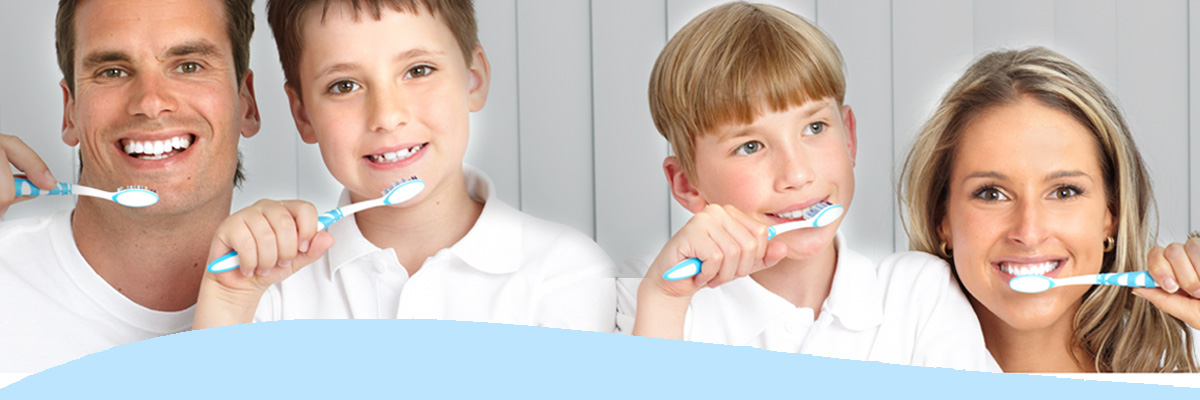Children’s Dentistry
The best way to keep your child’s visit to the dentist happy is to keep their teeth healthy. Our office provides a variety of preventative measures, including:
Topical fluoride and fluoride varnish
Topical fluoride is probably the most important source of prevention of tooth decay. Topical fluoride inhibits the metabolism of the decay-producing bacteria in plaque and stabilizes minerals in the teeth, thus preventing or slowing down the caries process. Fluoride varnish has a sticky consistency which helps it to adhere to the tooth’s surface thereby allowing the fluoride to stay in contact with the tooth for several hours. Since it does not require the use of fluoride trays they are suitable for use in patients with a strong gag reflex.
Sealants
Children’s back teeth (premolars and molars) often have deep grooves on their chewing surfaces that almost always collect food and bacteria. The chewing surfaces are where four out of five cavities in children are found. Sealants can fill the grooves and keep the tooth surface cavity free. They are placed without drilling and without a shot. They are an easy cost effective way for children to be cavity free!
Mouthguards
When a child begins to participate in recreational activities and organized sports, injuries can occur. A properly fitted mouth guard, or mouth protector, is an important piece of athletic gear that can help protect your child’s smile, and should be used during any activity that could result in a blow to the face or mouth.
Unfortunately, some children do develop cavities. Our office utilizes techniques to keep children as comfortable and cooperative as possible during their dental treatment.
Behavior management techniques
Our office uses proven techniques to help children. These include; modeling, communicative management, nonverbal communication, tell-show-do, positive reinforcement, parental absence/presence and distraction. The tell-show-do technique is where the dentists might name a dental instrument, show the instrument by using it to count your child’s fingers, then use the instrument in treatment. The modeling technique pairs a timid child in dental treatment with a cooperative child, sometimes a sibling. They quickly learn that what the other child is doing is easy! The most preferred technique is praise. Every child does something right during a dental visit and we let children know that.
Most children respond very well to these techniques. Some children may still be uncooperative after we have employed these techniques. If this occurs we have other options that allow us to complete the work at hand.
Nitrous Oxide (“laughing gas”)
Nitrous oxide can reduce anxiety and gagging in children, making long appointments easier. Nitrous oxide/oxygen is a blend of two gases, oxygen and nitrous oxide which is given through a small breathing mask. The child remains conscious during treatment; post-treatment recovery is fast and complete
Oral Sedation
Children who are more anxious may need an oral medication that is stronger than nitrous oxide. Oral sedative medications cause most children to become relaxed and drowsy. Unlike general anesthesia, sedation is not intended to make a patient unconscious or unresponsive.
If you have any questions or concerns, please get in touch and we will be happy to answer any questions.
We appreciate you trusting us to work with your children. We will treat them as our own and care for them to the best of our ability and training.
 Natalie Khadavi
Natalie Khadavi
